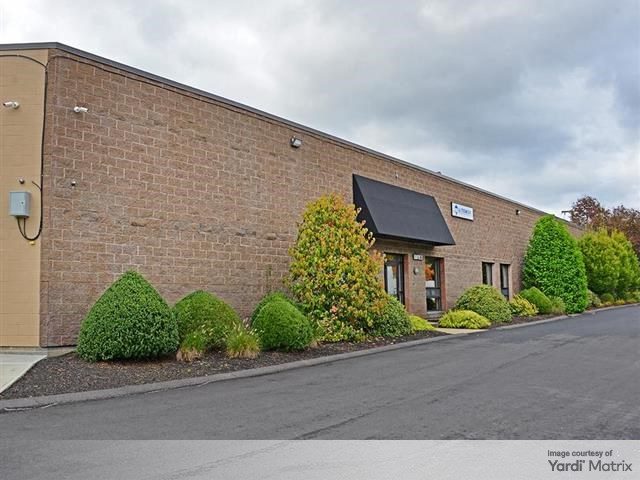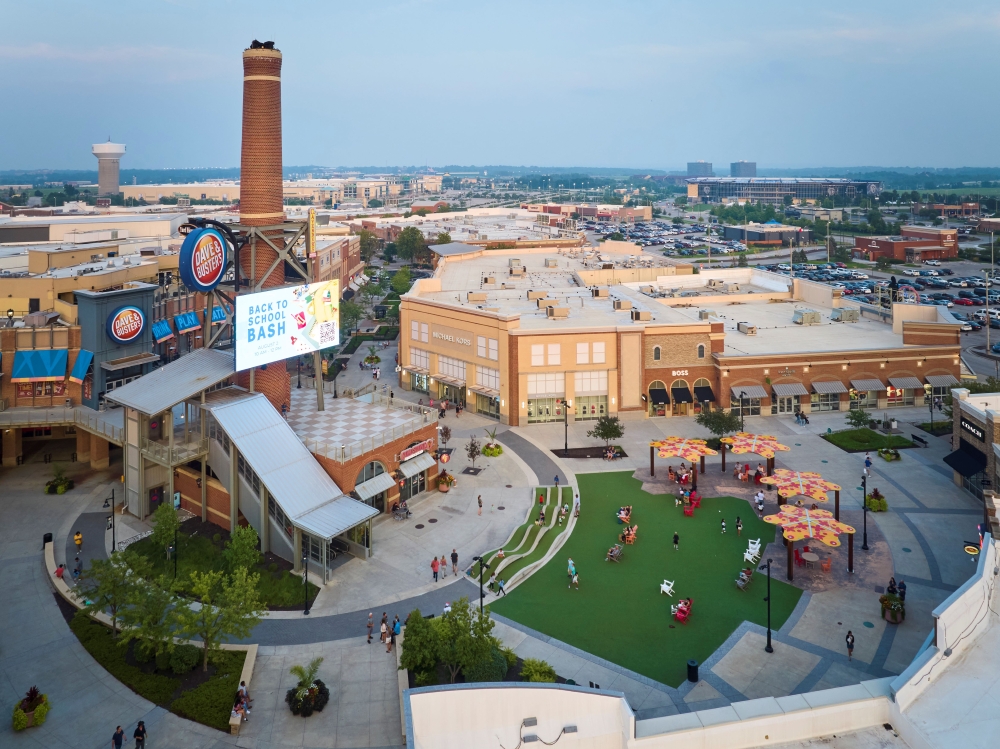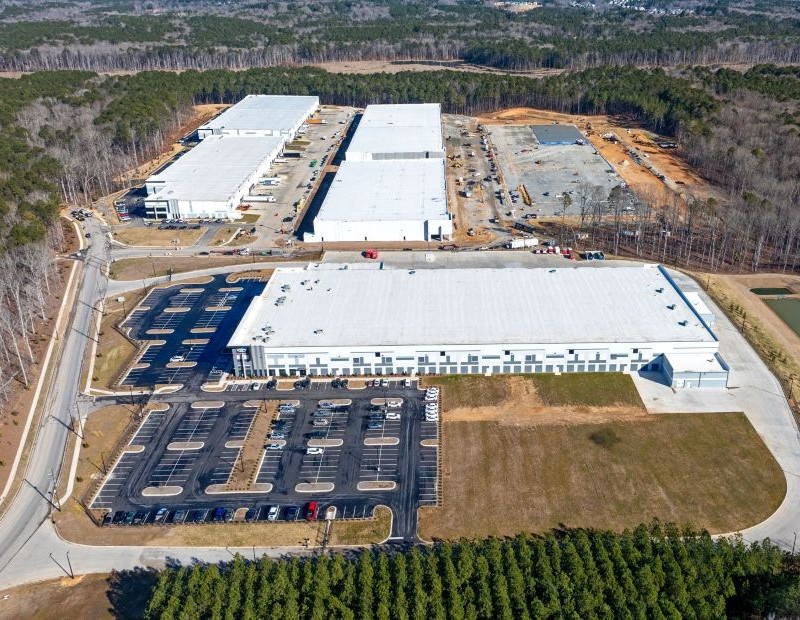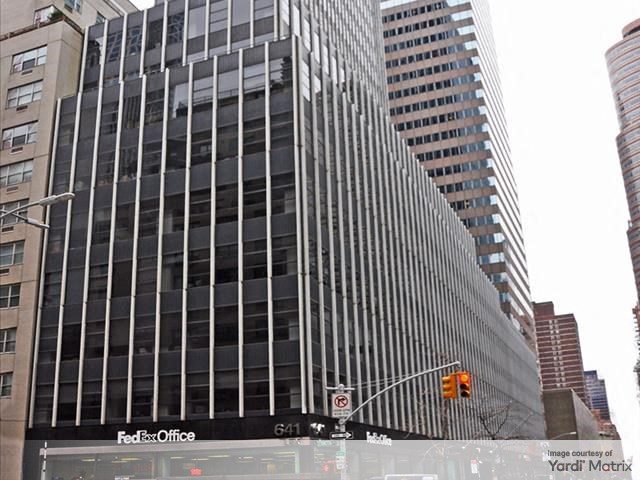How to Protect CRE From Wildfires
Adopt these practices and building materials to limit risk at your properties, says Dave Gouker of The Hartford.
People assume wildfires only occur in the Western United States, but they can happen anywhere. Commercial property owners in Florida, Kentucky and even Massachusetts have experienced wildfires and their aftermath, and while most wildland fires may have been started by people, lightning is another common ignition source. The issue has also become more significant for businesses as office buildings and industrial parks have been developed away from city centers and into rural areas, in some cases within heavily wooded areas, which places more property and employees at greater risk from wildfire dangers.
To help limit the risk for property owners and managers, there are prudent practices and resilient building materials that can be adopted to assist in mitigating costly losses. Even though, businesses can’t prevent a wildfire from approaching their property, they can take steps now to help protect employees, buildings, equipment, inventory, vehicles and other assets from injury and damage.
Evaluate Wildfire Risk
First, property owners and managers should get background information about wildfire activity in their area from local fire officials or the forestry service and learn about the risk of wildfire in the area. In addition, they should be inquisitive about local wildfire history and research if, and when, wildfires have occurred in the area and under what conditions.
Then, it is important to look at the topography of the area where facilities are located and learn how this affects the wildfire risk for businesses and employees. For example, if any buildings are on steep slopes, owners will need to implement extra protective measures such as larger safety zones because fire moves more quickly uphill than on level areas. You should also talk to local fire department or forestry official for more information.
In addition, it would be beneficial to learn about the prevailing winds and typical weather locally and stay informed about weather and other conditions that increase the likelihood of wildfire. This includes drought conditions, which increase the likelihood and severity of wildfires and put property at risk of extensive damage.
Water supply should also be evaluated as well, including natural water supplies on properties such as rivers or ponds, and consider how these might help keep fires away, or serve as areas of safety and be used to extinguish a fire. This can be a significant development as water supplies in rural areas may be limited, especially in dry seasons or drought conditions.
Develop a Crisis Management Plan
Having a disaster plan is essential in protecting property from wildfires and potential damage. The written plan should tell employees and even customers what to expect. If a property owner doesn’t have a disaster plan, it’s not too late to create one. Here are some key things to include:
- Step-by-step instructions to minimize risk
- Directions for how to protect employees and property
- An evacuation plan
- Emergency numbers
- A designated crisis team
If a company must close and evacuate employees because of a wildfire, having a disaster plan can help with business continuity. It is important to keep critical documents stored in a safe that is fire resistant or keep it located off premises. It is equally important to backup digital copies of company data. In addition, if a business is in an area prone to wildfires, it is critical to include information on wildfire preparedness in the disaster plan.
Build With Protection In Mind
In both new construction and existing buildings, property owners can take steps to reduce their fire risk. Building improvements such as installing smoke detectors and automatic fire sprinklers in every building, as well as connecting a fire alarm to a central station or local fire department can add more protection from fire damage. For additional protections, property owners should consider using window drapes with fire-retardant chemicals, putting mesh covers over exterior vents, around decks or attic openings to prevent outdoor embers from going inside the building, and ensuring emergency vehicle access to your business’ property.
Landscape design also plays an important role in creating or increasing fire risk. For example, there are certain trees and plants that burn more easily and can spread a fire rapidly. In addition, the proximity of trees and other plants to buildings and fueling areas can also affect how quickly a fire could spread to and overwhelm a property. However, large patios or plazas around a building can be effective in blocking the spread of fire, and stone or brick walls can shield a property from heat and flames. Ponds and lakes can block fire and act as a readily available water source, even though they may have originally been built as an aesthetic design.
Among the more important steps to follow to reduce fire risk is good grounds maintenance. For example, well-watered, well-pruned grounds can provide protection against approaching fire by creating a safety zone around the building. To be effective though, a clearance zone of 100 feet from grassland exposures and 300 feet from woodlands should be maintained, and for structures on steep slopes, vegetation should be removed for a 200-foot downslope in order to maintain sufficient clearance. Mulch and dryer vegetation can be ignited by embers in most cases. Being scrupulous in maintaining the property grounds will subsequentially reduce the amount of material that could fuel a fire and contribute to its spread. This also includes asking the local power company to remove branches that are near power lines.
Employ Fire-Safe Practices
Naturally, fire safety is important for every business. However, if assets are in a wildfire area, owners and managers need to take extra steps to prevent fires from starting and spreading. While it’s not easy to predict how a wildfire will impact business, it is essential for property owners to take proactive measures to help protect their company and assets. Partnering with an experienced insurance company can be beneficial and work in tandem to the structural mitigation efforts undertaken by a business owner. At The Hartford, for example, risk engineering specialists know the unique risks and challenges that many businesses face. When it comes to wildfires, the insurer can help business owners better understand how fire will behave on their property and help prevent issues from happening through innovative technology and specialized insurance solutions.
Technology however is not a substitute for well-trained employees in fire-safe behavior. This is especially important for tasks with a high fire risk such as welding and cutting, fueling vehicles, and working with ignitable liquids. Business should teach employees about the importance of good housekeeping in preventing fires such as having an adequate number of appropriate fire extinguishers and maintain them properly, and then be sure to train key employees in when and how to use fire extinguishers. An evacuation plan should also be developed, and evacuation drills should be conducted regularly so that all employees become familiar with evacuation routes and routines.
Dave Gouker is the risk engineering director of Property and Inland Marine for The Hartford. He has more than 38 years of experience in the risk engineering field working with domestic and global carriers, responsible for developing engineering services and tools to a team of Property and Inland Specialists.








You must be logged in to post a comment.